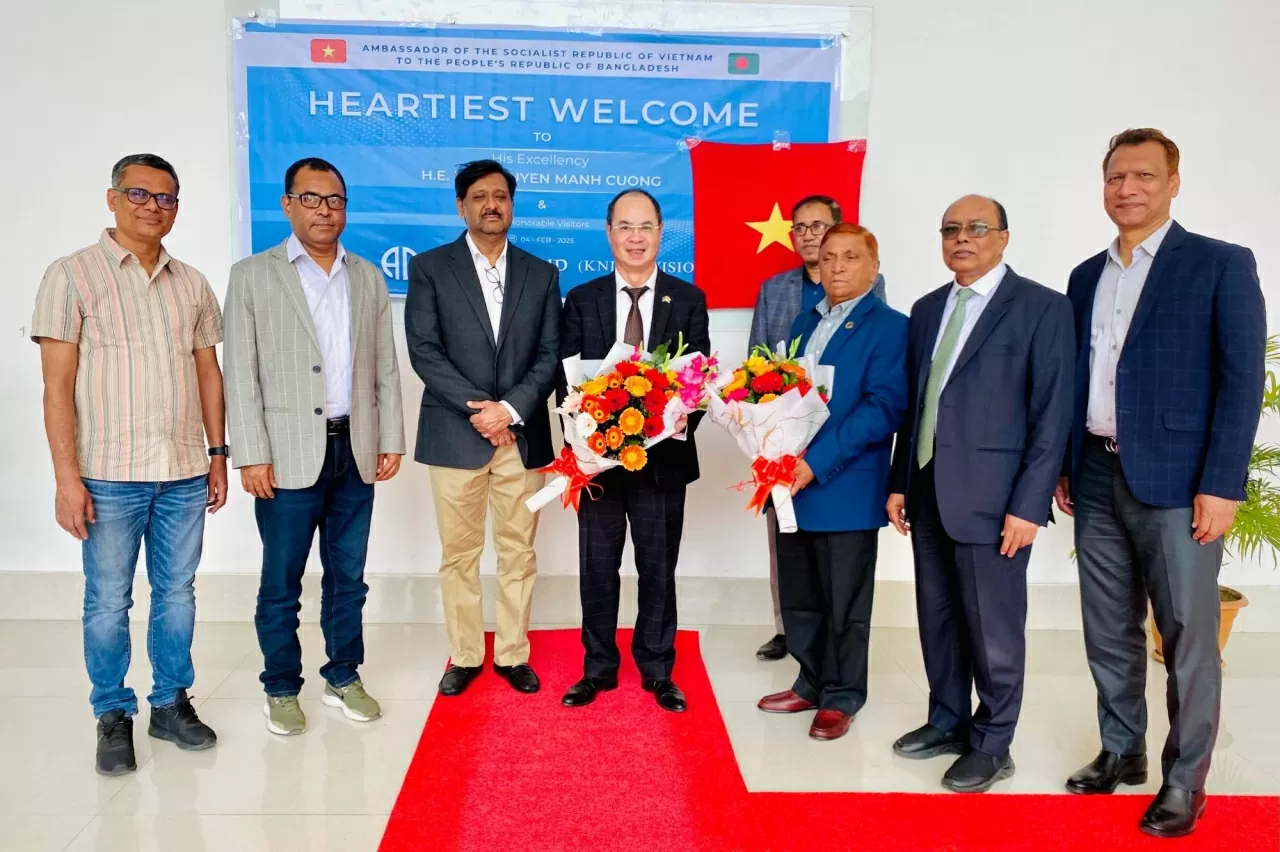 |
| Ambassador Nguyen Manh Cuong visits a textile factory of Azim Group in Chattogram city, Bangladesh, February 2025. (Source: Embassy of Vietnam in Bangladesh) |
The green transition towards sustainable development is considered a vital goal, an inevitable and irreversible trend in the world 's development process. How is this process taking place in Bangladesh, Ambassador?
To respond to the global climate crisis, countries around the world, albeit at different levels, are making efforts to implement a comprehensive green transition. As a coastal country in South Asia, with one of the highest population densities in the world (over 170 million people, an area only half the size of Vietnam), Bangladesh is among the most vulnerable countries, most severely affected by climate change. The green transition towards sustainable development is truly a vital goal, an inevitable trend in the development process of Bangladesh.
Realizing the urgency of the problem, from the very beginning, in addition to the Constitution (1972), the Environmental Conservation Act 1995 (amended in 2010), the Bangladesh government has issued many policies, plans, strategies... as a basis for the green transition process such as: Bangladesh Renewable Energy Policy (2008), Climate Change Strategy and Action Plan (2009), National Disaster Management Plan 2021-2025, Outlook Plan 2041, Mujib Climate Prosperity Plan (2021-2030), Delta Plan 2100...
In addition, Bangladesh has established many agencies and organizations from national to local levels to deploy relevant institutional systems such as: National Environment Council headed by the Prime Minister, Sustainable and Renewable Energy Development Authority (SREDA), Bangladesh Climate Change Trust Fund (BCCTF)... Up to now, the deployment of relevant institutional systems has generally achieved initial results, especially in some important sectors and fields of the economy such as:
In the banking and finance sector , in order to achieve the global goals set through the Paris Agreement and the United Nations Sustainable Development Goals (SDGs), the Central Bank of Bangladesh launched the Green Banking Initiative in 2011 to support and promote environmentally responsible financing; issue guidelines on environmental risk assessment of loan proposals and on greening internal processes and operations in banks.
Based on the guidelines of the Bangladesh Central Bank, most of the banks in the country have taken many measures to improve their environmental management indicators. Another prominent initiative of the Bangladesh government to promote green finance and sustainable finance is the establishment of the Green Transformation Fund in 2016, which is directly managed by the Bangladesh Central Bank.
The Green Transition Fund was initially established with US$200 million to recapitalize small and medium-sized enterprises operating in three export-oriented sectors of textiles, leather and footwear, and has since been expanded to include all export-oriented industries, facilitating sustainable export growth as the country transitions to a greener economy.
According to the Bangladesh Central Bank, the total disbursement from the Green Transformation Fund is USD 140.94 million for 47 projects and EUR 71.21 million for 30 projects in 2022-23. The Bangladesh Central Bank is currently implementing a Sustainable Finance Program, which allocates a minimum of 20% of long-term loans to sustainable finance. The program also provides a sustainability ranking for banks and announces the top 10 best performing banks every year.
In the national budget for fiscal year 2022-23, an incentive has been given to green factories in the form of a 2 percentage point tax rebate. The proposed tax rate for export-oriented green industries is 10%, while the tax rate for export-oriented non-green industries is 12%. Previously, only green factories in the garment (RMG) sector were eligible for this incentive.
In the field of disaster control and management , the Bangladesh government has implemented: (i) completed 726 km of river bank protection, 2,123 km of river excavation and dredging, 1,266 km of embankments, dug/re-dug 181 km of irrigation canals and 499 km of drainage canals; (ii) 72 solar power plants providing a total of 4,626 MW of electricity were installed and put into operation; (iii) 82 water control infrastructure works were built; (iv) 6,921 hectares of natural land were put into afforestation... Currently, in the face of difficult economic conditions, the Bangladesh government is actively calling for support and assistance from partner countries and international organizations around the world to continue researching and implementing measures to respond to climate change in this country.
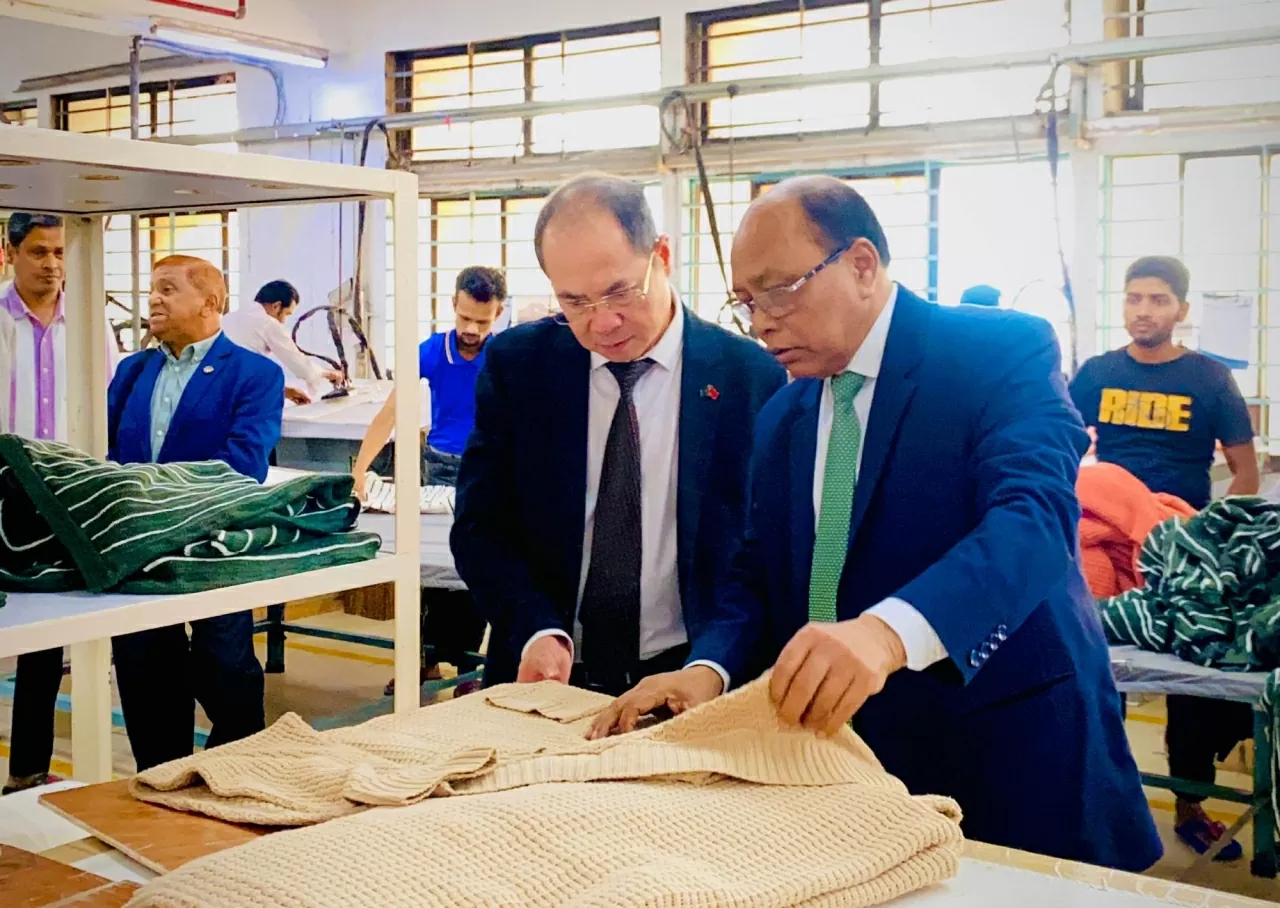 |
| Ambassador Nguyen Manh Cuong learns about the textile production model at the factory of Azim Group. (Source: Embassy of Vietnam in Bangladesh) |
Bangladesh has “greened” the textile industry early (since 2009) and has now established more than 200 LEED-certified factories, meeting the requirements of energy saving and environmental protection. Although the country ranks second in the world in textile and garment exports, 80% of Vietnam’s enterprises are small and medium-sized, facing financial barriers when seeking to “green”. According to the Ambassador, what lessons can Vietnam learn from Bangladesh on the path to sustainable development in this sector?
To date, Bangladesh boasts of having around 224 LEED (Leadership in Energy and Environmental Design) green garment factories certified by the United States Green Building Council (USGBC). Globally, the fashion industry is considered to be the most polluting industry.
To minimize the major environmental impacts of this sector, the Bangladeshi garment industry has addressed the above shortcomings through a number of initiatives such as: committing to reduce greenhouse gas emissions by 30% by 2030 under the Fashion Industry Charter for Climate Action of the UNFCCC (United Nations Framework Convention on Climate Change) in 1992; participating in the European Union's SWITCH2CE (Moving to a Circular Economy Value Chain) Project to promote circular economy activities and the Partnership for Cleaner Textiles (PaCT) of the International Finance Corporation to improve resource efficiency...
Many textile factories in Bangladesh are now stepping up their investment in applying and upgrading the most modern “green technologies” in energy and water conservation, air pollution control, waste and wastewater management. Thereby, the working environment for workers is ensured to be safe, energy costs are significantly reduced, brand value is enhanced and consumers are increasingly interested in products manufactured from green technology, which are environmentally friendly.
Based on the positive results from the “greening” of the textile industry in Bangladesh, Vietnam can draw some lessons as follows:
(i) Effectively utilize government financial support mechanisms such as Green Bank, Green Transformation Fund, etc. Textile and garment is a key economic sector (employing about 4.5 million workers and contributing more than 80% of Bangladesh's total annual export turnover), so it is always a top priority in the socio-economic development policies and strategies of the Bangladesh government. In addition to policies to support the maintenance and development of textile and garment factories to solve the problem of unemployment at a high level, the Bangladesh government, through the banking system and domestic financial funds, supports garment factories with capital, tax reductions, etc. so that factories can transform technology, meeting customers' increasingly high requirements for environmental protection.
(ii) Most Bangladeshi textile and garment enterprises are always proactive in adapting and complying with international regulations and the increasing requirements of foreign partners and customers on green standards in the production process; proactively learning from other countries' experiences in "greening" while focusing on promoting research and development (R&D) to absorb and apply new techniques and technologies in the world to the production process at domestic factories, thereby ensuring products of good quality and environmental friendliness.
(iii) Focus on gathering and building a strong and mutually supportive textile and garment business community, playing an important role in the process of researching, advising, and proposing new policies and green transformation models that are highly feasible when applied for the government to consider and implement appropriate support measures for domestic textile and garment enterprises. Vietnam can also learn from the model of large business organizations in the textile and garment sector of Bangladesh such as the Bangladesh Garment Manufacturers and Exporters Association (BGMEA), the Bangladesh Knitting Association (BTMA)... to play the role of a "think tank", proactively learn from international experience, research and propose, and advise the government on relevant policies.
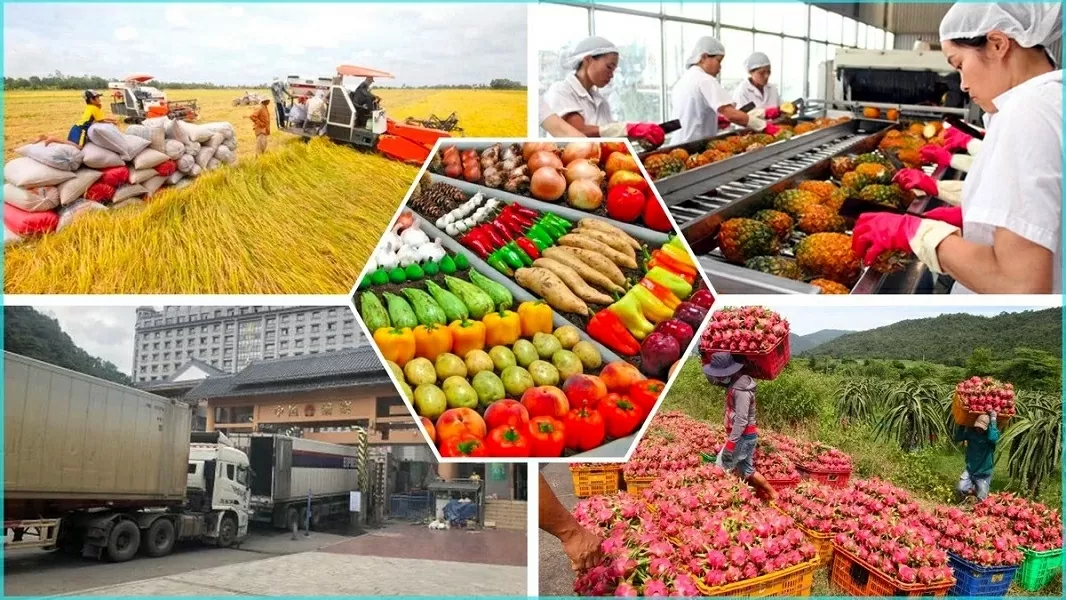 |
| In addition to the textile and garment sector, agricultural products are a potential area for cooperation between Vietnamese and Bangladeshi enterprises. (Source: VnEconomy) |
Could you tell us in which areas Vietnam and Bangladesh can “join hands” to win together on the green growth roadmap?
Based on the good cooperation between the two countries over the past 50 years as well as the specific advantages of each country, Vietnam and Bangladesh can absolutely strengthen win-win cooperation in the green transition process. Some potential areas where the two sides can “join hands” include:
(i) Agricultural and aquatic product production and export : As a country with a lot of experience in this field, Vietnam can increase sharing its lessons and experiences, supporting Bangladesh with green technology and techniques that are being successfully applied in Vietnam.
(ii) Textile sector : to continue promoting the strengths of each country in textile production and export, the textile and garment industries of Vietnam and Bangladesh can support and complement each other through contacts and connections between relevant agencies and the textile and garment business community of the two countries, thereby enhancing sharing and learning from each other's experiences in green transformation, referring to the "greening" model that has been successfully applied in textile and garment production facilities, contributing to building a green economy and sustainable development in each country in the coming time. In fact, in recent times, a number of garment enterprises of the two countries have cooperated very effectively in this field.
It can be said that, although still one of the least developed countries, still facing many difficulties, Bangladesh's efforts in the green transition process, towards sustainable development, especially in the textile industry, have achieved very admirable initial results. These are valuable experiences for relevant agencies and Vietnamese enterprises to study and apply to the actual production and business environment in Vietnam.
Thank you very much Ambassador.
The Partnership for Green Growth and the Global Goals 2030 (P4G) High-level Forum was established in 2017 on the basis of an initiative of the Danish government, formerly known as the Global Green Growth Forum (3GF). To date, the P4G Forum has 12 member countries including: Denmark, Chile, Mexico, Vietnam, Korea, Ethiopia, Kenya, Colombia, the Netherlands, Bangladesh, Indonesia and South Africa with the participation of more than 90 countries, international organizations and businesses. P4G is considered the world's leading forum for promoting public-private partnerships, connecting governments, businesses and socio-political organizations to jointly develop breakthrough solutions for green growth, contributing to the implementation of the 2030 Sustainable Development Goals (SDGs). P4G's support to partner countries is mainly through public-private partnerships, providing financial and technical support for small and micro enterprises to implement activities to respond to climate change. |
Source: https://baoquocte.vn/chuyen-doi-xanh-menh-lenh-cap-bach-cho-ca-viet-nam-va-bangladesh-309818.html


![[Photo] Readers line up to visit the photo exhibition and receive a special publication commemorating the 135th birthday of President Ho Chi Minh at Nhan Dan Newspaper](https://vphoto.vietnam.vn/thumb/1200x675/vietnam/resource/IMAGE/2025/5/17/85b3197fc6bd43e6a9ee4db15101005b)
![[Photo] Prime Minister Pham Minh Chinh chairs meeting on science and technology development](https://vphoto.vietnam.vn/thumb/1200x675/vietnam/resource/IMAGE/2025/5/17/ae80dd74c384439789b12013c738a045)
![[Photo] More than 17,000 candidates participate in the 2025 SPT Competency Assessment Test of Hanoi National University of Education](https://vphoto.vietnam.vn/thumb/1200x675/vietnam/resource/IMAGE/2025/5/17/e538d9a1636c407cbb211b314e6303fd)



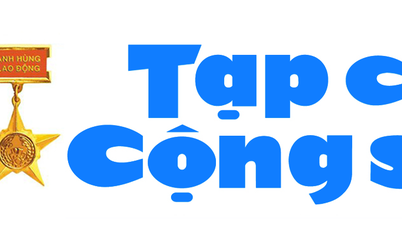

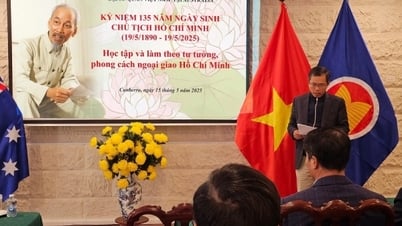
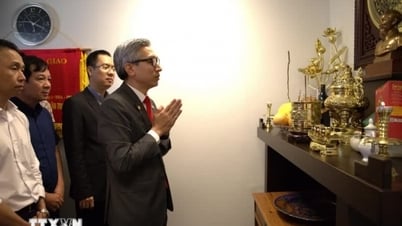
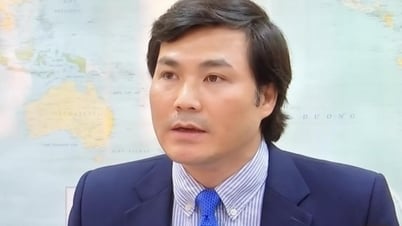
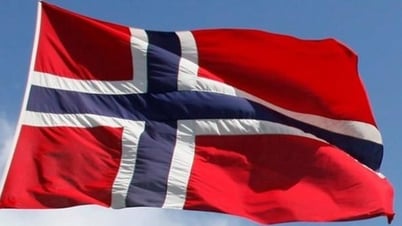





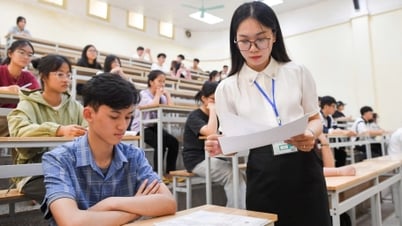
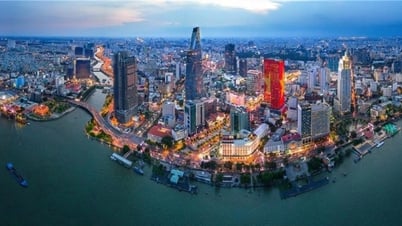
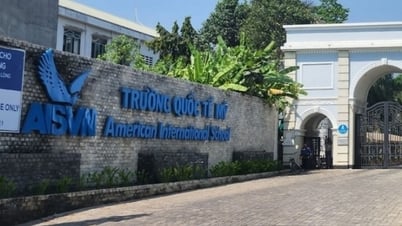



![[Photo] Nearly 3,000 students moved by stories about soldiers](https://vphoto.vietnam.vn/thumb/1200x675/vietnam/resource/IMAGE/2025/5/17/21da57c8241e42438b423eaa37215e0e)


























































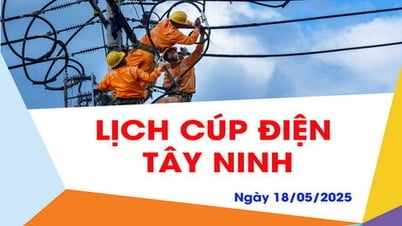

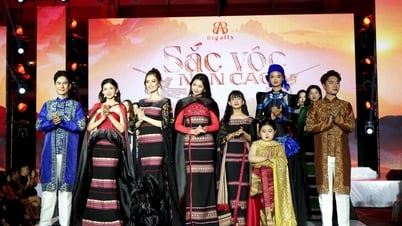












Comment (0)